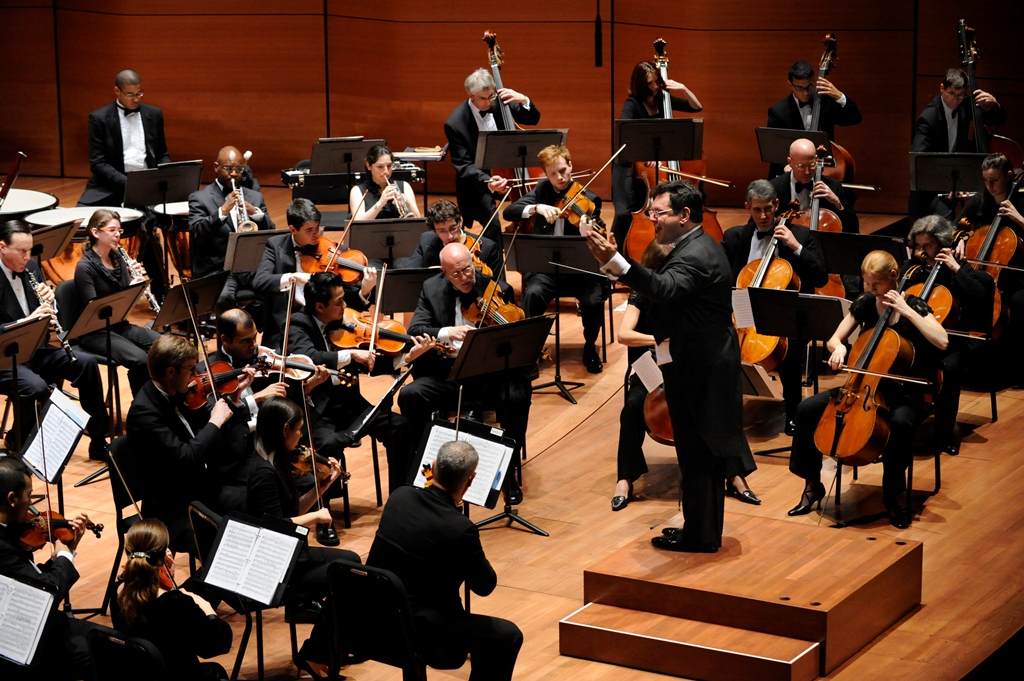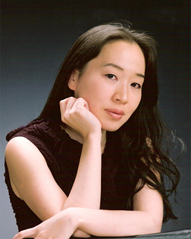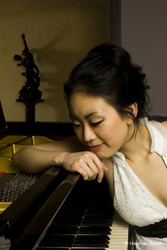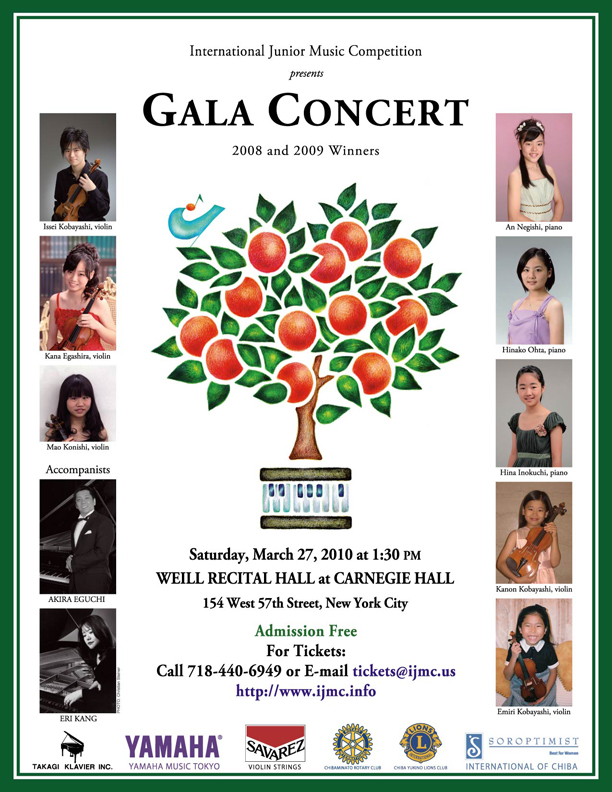An evening of works by five living composers was presented by the Enhake Quartet from Florida State University on May 3rd. The members of this foursome, all impressive soloists and adept chamber musicians, made strong cases for each of the compositions on this program. One of the defining characteristics of the Enhake is rock-solid rhythmic integrity which was evident from the start of “Breakdown Tango” by the composer John Mackey. Propelled by the violinist M. Brent Williams’ driving sixteenth note ostinato, each of the other players added a layer of complexity until the grand climax gives way to a lonely habanera solo on cello. Throughout the tango, clarinetist Wonkak Kim wove his sultry, stylized melodies into the fabric. Much of this piece feels as though it has quotation marks around it, yet in spite of that, it is well crafted and benefited from precise ensemble.
Two movements of Kris Maloy’s “Quartet in Four Actions” entitled “Slink” and “Float” further proved the quartet’s strengths in balance, intonation, and musicality. The simple arc of “Slink”, with its slowly blossoming minor third motive, was beautifully paced and modulated. At the outset of “Float”, cellist Jayoung Kim spun a legato line of great elegance, the initial voice in an expansively lyrical canon. As the music spiraled downward in dynamic and pulse, the players handled their challenges with poise.
Libby Larsen’s “Rodeo Queen of Heaven” proved to be the most harmonically adventurous composition in a decidedly conservative program. It commenced with a burst of activity. As the pianist Eun Hee Park held a tenacious pedal note, her colleagues embarked upon an almost improvisational extended fantasia. Ms. Larsen asks the performers of this piece to extend the boundaries of traditional technique, and Enhake is ideally suited to the task. This was a polished, yet spontaneous performance.
Peter Lieuwen’s “Gulfstream”, which opened the second half, was quite obviously programmatic in its deft evocation of the swirling waters of that grand body of water. Again, Eun Hee Park provided a solid foundation of fluent pianism, at times industrious, and then gently undulating. Along the way, Mr. Kim showed his impressive range in a quasi cadenza-like solo for clarinet. This was not an ambitious work, but well structured and idiomatic in its writing.
For sheer enjoyment, it would be hard to beat Peter Schickele’s “Quartet in A” as a program finale. In four clearly defined movements, the composer employs elements of French salon music, American jazz, and Eastern European folk dance, complete with off-kilter meter changes. Mr. Schickele knows how to feature his musicians, providing them with meaty, virtuosic rifts, and intuitively musical passages which just seem fun to play.
I look forward to hearing Enhake again soon, and by then I hope they will have been able to commission an even greater range of works for their growing repertory. They are excellent artists and technicians who present thoroughly prepared performances.



 Gold medalist at the 2008 World Piano Competition in Cincinnati, South Korean pianist Yoonjung Han recently presented her debut recital at Lincoln Center’s Alice Tully Hall. A feeling of celebration and anticipation of the moment filled the auditorium. Having made her debut at the age of thirteen, Han is no stranger to the concert stage. She got right to business with a colorful and joyfully performed Haydn Sonata in E-flat Major, Hob. 52. After the light and giddy first movement, the audience erupted into applause. The Adagio was carefully planned out and balanced, though one might have wished for more spontaneity and abandon. The Presto Finale floated gracefully above ground and was received with a warm ovation.
Gold medalist at the 2008 World Piano Competition in Cincinnati, South Korean pianist Yoonjung Han recently presented her debut recital at Lincoln Center’s Alice Tully Hall. A feeling of celebration and anticipation of the moment filled the auditorium. Having made her debut at the age of thirteen, Han is no stranger to the concert stage. She got right to business with a colorful and joyfully performed Haydn Sonata in E-flat Major, Hob. 52. After the light and giddy first movement, the audience erupted into applause. The Adagio was carefully planned out and balanced, though one might have wished for more spontaneity and abandon. The Presto Finale floated gracefully above ground and was received with a warm ovation. This concert “celebrated the American creative spirit” by combining photography and music. The program featured the “three B’s” American style – Barber, Bernstein, and Brubeck (Dave and his son Chris) – and included two New York premieres: the Brubecks’ “Ansel Adams: America,” and Bill Cunliffe’s fourth stream… La Banda (The Band). Composers Dave Brubeck and Bill Cunliffe were present, as were several members of Adams’ family.
This concert “celebrated the American creative spirit” by combining photography and music. The program featured the “three B’s” American style – Barber, Bernstein, and Brubeck (Dave and his son Chris) – and included two New York premieres: the Brubecks’ “Ansel Adams: America,” and Bill Cunliffe’s fourth stream… La Banda (The Band). Composers Dave Brubeck and Bill Cunliffe were present, as were several members of Adams’ family.